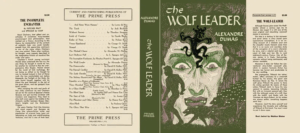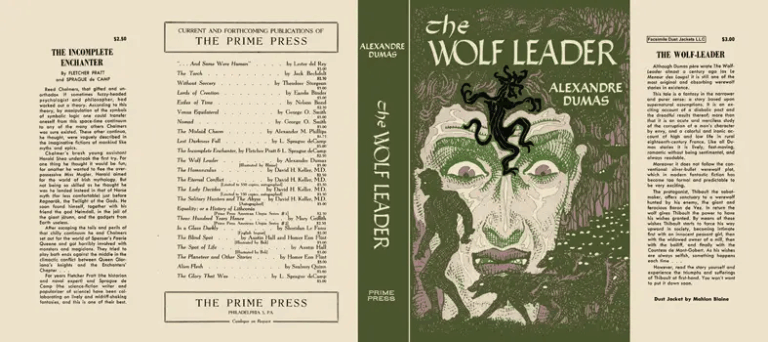After seeing the splendid exhibition dedicated to Casorati here in Milan, I was reminded by an old-time friend that once upon a time I used to organise themed visits around Milan and bring them about. It was nice, so here I am. Have you been to see the recent exhibition? Have you ever been a long-time lover of the painter? Do you like architecture, or do you simply want a stroll around Milan that doesn’t take you to see the same old things and doesn’t worship ugly, fascist architecture? Here I am. I’ve come to save you with my Casoratian Walk Through Milan (or, as it has been dubbed by that same friend, A Metaphysical Urban Diary in Seven Movements).
“To paint is not to describe, but to frame a silence.”
– Felice Casorati
Felice Casorati’s world is one of perfect pauses. His paintings, whether depicting suspended female figures, interior spaces dense with geometry, or scenes drained of narrative tension, resist action. Instead, they offer stillness, structure, and a profound, disquieting sense of presence. Casorati did not paint to explain; he composed, balanced, and withheld. Each canvas is a psychological container—a space where time hesitates and emotion is sublimated into form.
Born in 1883, Casorati moved through the artistic upheavals of the early twentieth century without being fully absorbed by any of them. He was adjacent to the Magic Realists, flirted with Rationalism, engaged with classical revival, and collaborated with theatres such as La Scala in the design of scenography and costume. But what defines his work most is a kind of metaphysical hush—one that links him, more than by style, to artists like Giorgio de Chirico or even the early Piero della Francesca. Casorati’s paintings are compositions of consciousness: they stage the visible world as if it were memory or prophecy.
This walk through Milan begins with that idea: that the city, like one of Casorati’s paintings, is full of pauses. Of shadows, structures, and figures that don’t quite move. Of interiors that feel like minds. Of ruins that speak not of decay but of poise. Milan is not the dramatic city, if you really know her. It is the city that composes itself.
In this piece, I take you for a stroll through my city with Casorati as a silent choreographer. We explore the city through the lens of six thematic moods and a bonus one, all grounded in Casorati’s visual vocabulary:
- Stillness and Suspension – where time seems paused and form hangs in waiting;
- Isolation in Togetherness – shared spaces where presence does not imply interaction;
- Interior Space as Psychological Landscape – rooms that mirror mental states;
- Classical Composition, Modern Uncanniness – balance laced with unease;
- The Female Figure: Muse and Enigma – women depicted not as types, but as psychic forms;
- Art as Geometry and Silence – architecture, repetition, and contemplative order.
To keep things rooted in place, these themes are explored through four urban circuits, each one a compact, walkable route across Milan’s historical, cultural, and emotional landscapes:
- Circuit 1 : Time Suspended – in the medieval and Roman core;
- Circuit 2 : Composed Realities – in Brera and the Rationalist west;
- Circuit 3 : Intimate Geometries – through interiors in the Buenos Aires–Venezia axis;
- Circuit 4 : The Still City Core – a bonus museum loop around the Duomo, for those who prefer slow looking over long walking.
All points are mapped below, grouped by colour. Each route will also be accompanied by a custom map, in which locations are marked by the colour-coded thematic overlays. You can follow the city geographically or emotionally. Start with a feeling—stillness, isolation, mystery—and find the places that hold it. Or begin with a neighbourhood—Brera, Porta Venezia, Piazza Affari—and let the themes unfold.
This is not a guidebook in the traditional sense. It is not meant to show what to do. Rather, it proposes how to look. How to enter a square as if entering a canvas. How to pause beside a museum courtyard or Roman ruin and notice not the history, but the hush. It is a notebook of slowed perception. Welcome to my city.
Since this pathway involved maps, it is better seen at this address. The tool I used is Esri (of course it is).
Circuit 1 — Time Suspended
“There are all kinds of silences and each of them means a different thing… the essence of its quality may linger in the silence that follows. It is a soundless echo.”
— Beryl Markham
This circuit unfolds across Milan’s historical core, where epochs overlap and metaphysical stillness emerges in the city’s least expected corners. Here, Casorati’s compositional tension—between movement and stasis, presence and absence—finds echoes in both ancient ruins and urban rituals.
Themes touched: Isolation in Togetherness (Giardini della Guastalla), The Female Figure (Duomo) Stillness and Suspension (Piazza Mercanti) Classical Composition, Modern Uncanniness (Museo Archeologico, Massimiano’s Imperial Palace), Interior Space as Psychological Landscape (Studio Museo Francesco Messina)
- Giardini della Guastalla – Ritualized Solitude;
- Duomo – The Silent Muses;
- Piazza Mercanti – The Frozen Agora;
- Massimiano’s Imperial Palacein Via Brisa – Imperial Absence;
- Museo Archeologico – Dialogues in Stone;
- Studio Museo Francesco Messina – Sacred Space Reclaimed.
Circuit 2 — Composed Realities
I like ruins because what remains is not the total design, but the clarity of thought, the naked structure, the spirit of the thing.
— Adolf Loos
This route unfolds along the axis between Brera, the Triennale, and Piazza Affari, weaving through spaces where Milan choreographs itself as both stage and sculpture. These stops resonate with Casorati’s exploration of theatrical stillness, formal order, and psychological ambiguity—not through motion, but through the poised tension of geometry, silence, and spatial drama.
Themes touched: Stillness and Suspension (Piazza Affari), Classical Composition, Modern Uncanniness (Giardino Aristide Calderini, Brera Gallery), The Female Figure, Muse and Enigma (Teatro alla Scala).
- Giardino Aristide Calderini – Fragmented Memory in Green;
- Piazza degli Affari – Finance and Figurative Absence;
- Teatro alla Scala – Staging Stillness;
- Brera Gallery – The Classical Mirror.
Circuit 3 — Intimate Geometries
“The best rooms have something to say about the people who live in them.”
— David Hicks
This is a circuit of controlled interiors and ritualised design, where Milan speaks softly in the language of mid-century taste and modernist clarity. Through these spaces, we trace Casorati’s subtle balance between geometry and emotion, elegance and estrangement.
Themes touched: Interior Space as Psychological Landscape (Casa Museo Boschi Di Stefano, Villa Necchi Campiglio), Art as Geometry and Silence (Museo della Permanente, Palazzo Isimbardi), The Female Figure, Muse and Enigma (Galleria d’Arte Moderna).
- Casa Museo Boschi Di Stefano – A Home Curated for Stillness;
- Museo della Permanente – Institutional Quietude;
- Galleria d’Arte Moderna (GAM) – Portraits in Suspension;
- Villa Necchi Campiglio – Bourgeois Ritual and Emotional Precision.
- Palazzo Isimbardi – Monumental Rhythm.
Circuit 4 — The Still City Core: A Museum Walk
“A room should never allow the eye to settle in one place. It should smile at you and create fantasy.”
— Juan Montoya
This route gathers Milan’s most accessible and artistically rich venues in one square kilometre. It focuses on paintings, settings, and silences that connect directly to Casorati’s visual grammar—geometry, pause, and psychological depth. Less walking, more lingering.

Length of the Route: 1.1 km (net time by foot outdoors: 14 minutes, but expect a lot of walking in museums)
Themes touched: All themes with the retrospective at Palazzo Reale, Stillness and Suspension (Piazza Mercanti), Art as Geometry and Silence (Museo del Novecento), The Female Figure, Muse and Enigma (Duomo di Milano, Teatro alla Scala)
- Piazza Mercanti – Urban Prologue in Minor Key;
- Palazzo Reale – The 2025 Casorati Retrospective;
- Museo del Novecento – Casorati in Context;
- Teatro alla Scala – Scenography and Silent Drama.
This itinerary is not meant to offer a complete portrait of Milan, of course, nor a guide to its best-known highlights, even if some of them do appear in the route. It proposes a different way of looking at the city—through the lens of Felice Casorati’s visual language. His work invites us to pay attention to form, rhythm, silence, and presence. Those same qualities can be found in many corners of Milan, if approached with care.
Each of the four circuits and six themes in this walkaround highlights a specific mood or way of experiencing space: a quiet square during non-conventional hours, a Rationalist façade at midday when the sun is in full blaze (yeah, we do have the sun, sometimes), a burgoise interior filled with personal meaning and existential dread. Some of these are hidden gems, others are familiar places observed from a different angle.
My suggestion is to accept an artist’s invitation to see the city not just as a backdrop, but as something carefully composed. In that sense, this is less a tour than a set of tools—an invitation to notice how space is shaped, how figures relate to one another, and how stillness can hold meaning. You don’t need to walk every route. Choose one that matches your pace, your interests, or your mood. All of them are accessible. The city will be there, waiting—quiet, structured, and open to interpretation.









No Comments